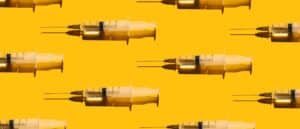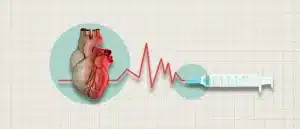The Everything Guide to Testosterone Pellets
- By Elizabeth Millard
- Fact-checked by Joy Ferguson
- September 22, 2023
If you suspect your testosterone is sputtering (you feel tanked, have been unable to shed pounds, or other impactful symptoms of low T) you might be right. Research shows testosterone levels start to drop by around 1% each year starting at age 30 (1). (To see where you stand, you can test your testosterone level at home.)
Low testosterone—a condition known as hypogonadism—can bring a host of unwelcome side effects that can significantly impact a man’s quality of life, says Suzanne Manzi, M.D., a regenerative and anti-aging specialist in Texas who routinely prescribes hormone therapy.
“Physically, low testosterone can lead to reduced muscle mass and strength, increased body fat, and diminished bone density, increasing the risk of osteoporosis,” Manzi notes. Sexual health may also be affected, through reduced libido and erectile dysfunction (2).
“Low testosterone can also have a profound impact on mental health, manifesting as mood swings, depression, and cognitive difficulties,” Manzi adds. “It can feel like you’re trapped in a foggy, unfamiliar landscape.”
Fortunately, there are ways to climb into the clear. Testosterone replacement therapy, or TRT, can help regulate the hormone, and the treatment is available in various forms: pellets (implanted under the skin), troches (lozenges), injections, and patches that are attached to the skin.
Here’s more on TRT and specifically, testosterone pellets, to see if they might be right for you.
Digging Into TRT Benefits
A libido boost is likely the first plus you might notice with TRT—but it’s far from the only benefit. Research suggests testosterone therapy can also result in (3):
More energy
If you’re fighting fatigue, you already know it’s tough to beat. TRT could put more fuel in your tank, according to a recent study (4). In fact, increased energy tends to be one of the most-cited benefits when men are surveyed about TRT results (5).
Sharper focus and less depression
Brain fog is real, and low testosterone may make it worse. There’s some evidence testosterone replacement therapy may help. One study found TRT not only boosted cognitive performance, but it acted on the brain in a way that reduced depression symptoms, too (6).
Steadier blood sugar
Low T tends to sabotage blood sugar function. In a study on men with diabetes and prediabetes, TRT was able to boost insulin resistance—and not only that, it helped improve body composition, which is another factor involved with blood sugar regulation (7).
Decreased inflammation
Too much inflammation is the big bad wolf in maintaining your health, blowing down your immune response and increasing risk for cardiovascular disease, diabetes, and other major issues.
And because TRT can improve body composition—and body fat is associated with more inflammation—it may help keep chronic inflammation controlled, research suggests (8).
Are You a Candidate for TRT?
Typically, those who use TRT are men over age 30, since testosterone levels naturally begin to decline after that milestone birthday, according to Manzi. That said, she says younger men with certain medical conditions like diabetes may also experience low testosterone. Genetics may also play a role.
Mayo Clinic notes that these conditions can include certain inflammatory diseases that impact the pituitary gland and hypothalamus—which both affect testosterone production.
For example, having mumps as a teen, getting chemotherapy or radiation treatment for cancer, or being diagnosed with a congenital condition called Klinefelter syndrome can all lead to testosterone level drops. Even the use of certain drugs like opiate pain medications can siphon your T tank and kick off symptoms as a result.
How Fast Does TRT Work?
How quickly you’ll notice changes can vary depending on the benefit, according to research published in the European Journal of Endocrinology (3). Researchers noted that changes in erectile function may take up to six months, for example, but effects on depressive mood may be seen in only three weeks.
In terms of how long you’ll be on the therapy, TRT is considered an ongoing treatment, so as long as you’re seeing benefits, you usually stay on it, though it is possible to stop TRT. Like any type of treatment, though, it’s wise to consistently check in with your doctor to make sure you’re on track.
Hone’s at-home testosterone assessment is the simplest way to uncover whether your levels are low. If you qualify for treatment, TRT can be sent right to your door.
How TRT Pellets Work
“Each delivery method for TRT comes with its own unique set of advantages, similar to how different vehicles are designed for different terrains,” Manzi explains.
Manzi considers pellets the “long-distance runners of TRT” because they provide a steady, slow release of testosterone over the course of three to six months, which eliminates the need for daily treatment.
Pellets are inserted just under the skin in the hip area, or another fatty part of the body since they’re placed in the subdermal fat layer. Testosterone pellets are smaller than the width of a dime and an in-office procedure to insert them usually takes about 15 minutes.
They’re like the “set-it-and-forget-it” option for TRT, and are ideal for those with busy lifestyles, according to Manzi. For example, if you travel often, testosterone pellets could be the right TRT option for you.
How long do testosterone pellets last?
While getting testosterone pellets is mostly painless, they do have some limitations. The biggest being: once the pellet is placed under the skin, your doctor won’t be able to change the dosage if you experience side effects. You’d need to get the pellets removed or your physician may decide to simply wait until they have dissolved, which can be up to six months, says Manzi.
Many healthcare providers prefer testosterone injections, because you can easily adjust the dose.
Does insurance cover testosterone pellets?
According to one testosterone pellet manufacturer, most commercial insurance plans cover testosterone pellets, but that’s not guaranteed. You’ll want to contact your provider in advance to verify coverage and reimbursement before getting pellets implanted.
Potential Testosterone Pellet Side Effects
Much like with any medication, TRT pellets can come with some side effects. Minor issues could involve simple irritation where the pellet is inserted, Manzi says, adding that more serious side effects can include fluid retention, infection, increased red blood cell count (risk of clotting), and decreased sperm production.
“These potential side effects underscore the importance of careful monitoring and regular follow-ups with a healthcare provider while on TRT,” Manzi says. “It’s not a journey to embark on lightly, but with the right guidance, the benefits can significantly outweigh the risks.”
Should You Choose TRT Pellets?
Your TRT choice is personal and should be made in consultation with a healthcare provider who can factor in variables such as your lifestyle, personal preferences, and medical history, Manzi says.
And like most things in life (your brand new job or next car), selecting your testosterone replacement method comes down to finding what’s most effective, convenient, and comfortable.
Hone physicians can assess if your testosterone levels are low, and if they are, help you decide if testosterone pellets are the right form of TRT for you.
Hone’s at-home testosterone assessment is the simplest way to uncover whether your levels are low. If you qualify for treatment, TRT can be sent right to your door.
References
1. Millar, A., et al., (2016). Predicting low testosterone in aging men: a systematic review
2. Rizk, P. et al., (2017). Testosterone Therapy Improves Erectile Function and Libido in Hypogonadal Men
3. Saad, F., et al., (2011). Onset of effects of testosterone treatment and time span until maximum effects are achieved
4. Ferreira, M., and Mendonca, J., (2022). Long-term testosterone replacement therapy reduces fatigue in men with hypogonadism
5. Straftis, A., and Gray, P., (2019)., Sex, Energy, Well-Being and Low Testosterone: An Exploratory Survey of U.S. Men’s Experiences on Prescription Testosterone
6. Jung, H., and Shin, H., (2016). Effect of Testosterone Replacement Therapy on Cognitive Performance and Depression in Men with Testosterone Deficiency Syndrome
7. Corona, G., et al., (2022). Testosterone therapy in diabetes and pre-diabetes
8. Bianchi, V., (2019)., The Anti-Inflammatory Effects of Testosterone
















